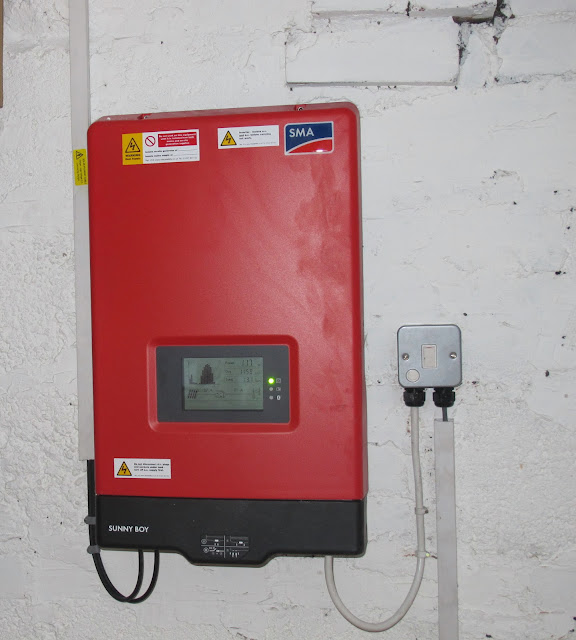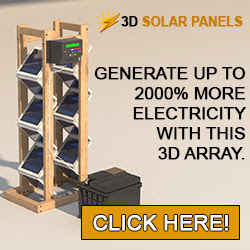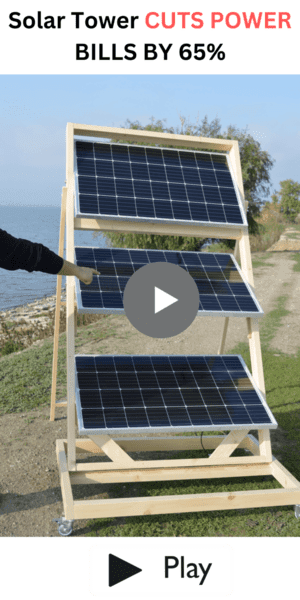Embarking on a DIY solar project is an exciting endeavor that not only contributes to sustainability but also offers significant cost savings in the long run.
One crucial component of a solar power system is the inverter, responsible for converting direct current (DC) generated by solar panels into usable alternating current (AC).
This article delves into the key considerations for selecting the right inverter for your DIY solar project.
Inverters for DIY solar projects
In the world of electricity, turning sunlight into power we can use in our homes is a bit like magic. The secret ingredient? Inverters!
They're like wizards that change the sun's power (direct current or DC) into the kind of power our gadgets and homes need (alternating current or AC).
Let's dive into the world of inverters, exploring why they're so important and the different types we can find.
Role of Inverter in Turning Sunlight into Power:
Imagine solar panels as superheroes capturing sunlight. But wait, it's not ready for our homes yet.
It's like having a bunch of different languages, and our homes only understand one. Here's where inverters come in—they're like translators, turning the sun's language (DC) into the language our homes speak (AC).
With special circuits and clever tricks, inverters make sure the power is just right for our gadgets and appliances.
What to look for when choosing an inverter?
System Size and Power Requirements
Understanding your energy consumption patterns helps in calculating the required capacity of your solar installation.
This involves assessing your average daily electricity usage and factoring in potential future increases.
Some methods to determine energy needs for DIY solar projects:
1. Determine Your Daily Energy Consumption:
Start by assessing your household's daily energy consumption in kilowatt-hours (kWh).
You can find this information on your utility bills, or you may use energy monitoring devices to measure consumption over a specific period.
Make a list of all the electrical appliances and devices you use, along with their power ratings in watts.
2. Consider Seasonal and Daily Variations:
Keep in mind that energy consumption can vary based on seasons and daily patterns. Identify any seasonal variations and peak usage times.
This will help you size your solar system to meet both average and peak energy demands.
3. Calculate the Daily Solar Energy Production:
Research the average daily solar insolation in your location. Solar insolation refers to the amount of sunlight available for solar energy generation.
The National Renewable Energy Laboratory (NREL) and other resources provide solar maps and data for different regions.
Multiply the daily solar insolation by the efficiency factor of your solar panels. This will give you an estimate of the daily energy production in kWh per installed watt of solar panels.
4. Determine System Size:
Divide your total daily energy consumption by the daily energy production per installed watt.
This will give you an estimate of the total installed wattage needed for your solar panels. Keep in mind that solar panels are typically sold in standard sizes, so round up to the nearest panel size.
5. Factor in System Losses:
Account for losses due to shading, dust, temperature variations, and other factors that may affect your solar system's efficiency.
Multiply your calculated system size by a factor (usually between 1.1 and 1.25) to compensate for these losses.
6. Selecting the Inverter:
Once you have determined the total installed wattage for your solar panels, choose an inverter that can handle that capacity.
Ensure the inverter's continuous output rating is equal to or greater than the total installed wattage of your solar panels.
7. Consider Inverter Oversizing:
In some cases, oversizing the inverter (up to 20-30%) can enhance energy harvest, especially if you anticipate expanding your solar array in the future.
However, be cautious not to oversize it excessively, as it might lead to efficiency losses.
8. Check Inverter Compatibility:
Verify that the selected inverter is compatible with your solar panels and other system components.
Consider additional features such as monitoring capabilities and integration with battery storage if you plan to expand your system later.
By following these steps, you can calculate your energy needs and make informed decisions when choosing an inverter for your DIY solar project
**Matching Inverter Capacity to the Solar Array**
Once you have a clear understanding of your energy needs, it's crucial to match the inverter capacity to the solar array.
Oversized or undersized inverters can impact the overall efficiency and performance of your solar energy system.
The goal is to achieve a balanced and optimized system that maximizes energy production.
Some things you can try:
1 Determine Total Solar Panel Capacity:
Identify the wattage rating of each solar panel in your array. The wattage is usually mentioned on the back of the panel or in the manufacturer's documentation. Multiply the wattage of a single panel by the total number of panels to get the total solar panel capacity in watts.
Total Solar Panel Capacity (Watts) = Wattage per Panel × Number of Panels Total Solar Panel Capacity (Watts)=Wattage per Panel×Number of Panels
2 Consider System Voltage:
Determine the system voltage of your solar array.
This is the voltage at which your solar panels are wired together. Common residential system voltages include 12V, 24V, or 48V. The choice of voltage depends on the size and configuration of your solar installation.
3. Account for Inverter Efficiency:
Inverters are not 100% efficient; they have some energy losses during the conversion process. Check the efficiency rating of the inverter you're considering.
Divide 100 by the efficiency percentage to get a multiplier for your solar panel capacity.
Efficiency Multiplier = 100 Inverter Efficiency Efficiency Multiplier=Inverter Efficiency100
4. Calculate Effective Solar Panel Capacity:
Multiply the total solar panel capacity by the efficiency multiplier to get the effective solar panel capacity that the inverter can handle.
Effective Solar Panel Capacity (Watts) = Total Solar Panel Capacity × Efficiency Multiplier Effective Solar Panel Capacity (Watts)=Total Solar Panel Capacity×Efficiency Multiplier
5. Select an Inverter:
Choose an inverter whose continuous output rating matches or slightly exceeds the effective solar panel capacity.
Ensure that the inverter's voltage rating matches your solar array's system voltage.
6. Consider Inverter Oversizing:
In some cases, you might consider a slight oversizing of the inverter (up to 20-30%) to account for potential future expansions or to improve energy harvest.
However, be cautious not to oversize excessively, as it could lead to efficiency losses.
7. Check Inverter Compatibility:
Verify that the selected inverter is compatible with your solar panels and other system components. Ensure that the inverter can handle the specific voltage and capacity of your solar array.
Efficiency and Conversion Rates
Inverter efficiency is a key determinant of overall system performance. Higher efficiency means less energy loss during the conversion process. This, in turn, translates to a higher yield of usable energy for your home or business.Understanding the efficiency ratings of inverters is vital to ensure the long-term viability and cost-effectiveness of your solar energy system.
**Importance of Choosing a High-Eficiency Inverter**
Investing in a high-efficiency inverter may involve a higher upfront cost, but the long-term benefits are substantial.
Understanding Inverter Efficiency Ratings:
Peak Efficiency:Weighted Efficiency:
Check for Advanced Features:
MPPT Technology: Maximum Power Point Tracking (MPPT) technology optimizes the inverter's performance by adjusting to changes in sunlight conditions, maximizing energy production.
Monitoring and Data Logging:
Inverters with monitoring capabilities allow you to track your system's performance over time. Look for user-friendly interfaces and compatibility with online monitoring platforms.
Grid Interaction Features: Ensure the inverter has features for seamless grid interaction, including anti-islanding protection and compliance with local grid regulations.
Warranty and Service:
Warranty Period: Check the warranty period offered by the manufacturer. A longer warranty period often indicates the manufacturer's confidence in the inverter's reliability.
Customer Support: Consider the availability of customer support and service. A responsive and supportive customer service team is essential for addressing any issues that may arise.
Maintenance Considerations In addition to the initial selection process, ongoing maintenance is crucial for the longevity and efficiency of your solar energy system. Regular monitoring and prompt response to any issues are essential to maximize the return on investment and ensure uninterrupted energy production.
Different Types of Inverters:
String Inverters:
- Overview: String inverters are the traditional heroes, converting power for many solar panels all at once.
- How They Work: They manage a bunch of solar panels together, transforming their power into usable electricity.
- Good Stuff: They're affordable and easy to use.
- Things to Watch Out For Sometimes, if one solar panel isn't doing well, it can affect the whole group.
Here are some string inverters that were generally well-regarded for DIY solar projects:
-
SolarEdge HD-Wave Inverter:
- Known for its high efficiency and compact design.
- Offers optimization at the individual panel level, maximizing energy production.
- Integrated arc fault protection for safety.
-
Enphase IQ7 Microinverter:
- Enphase microinverters are known for their modular design, where each panel has its own inverter.
- Provides high reliability and performance monitoring for each solar panel.
- Simplifies installation and maintenance.
-
Fronius Primo Inverter:
- Fronius inverters are recognized for their durability and high efficiency.
- Integrated Wi-Fi for monitoring and easy access to system data.
- Lightweight and easy to install.
-
ABB UNO-DM-TL Inverter:
- ABB inverters are known for their reliability and high performance.
- Dual MPPT (Maximum Power Point Tracking) for optimized energy harvesting.
- Graphical display for easy monitoring.
-
SMA Sunny Boy Inverter:
- SMA is a well-established brand, and the Sunny Boy series is popular for residential solar installations.
- OptiTrac Global Peak for better tracking and efficiency.
- Integrated web interface for monitoring.
-
Huawei SUN2000 Inverter:
- Huawei inverters are recognized for their advanced technology.
- Smart I-V Curve Diagnosis to detect and troubleshoot issues.
- High efficiency and compatibility with various panel types.
-
Growatt MIN 2500-6000TL-X Inverter:
- Growatt inverters are known for their cost-effectiveness.
- Multiple MPPTs for improved energy harvesting.
- LCD display for real-time monitoring.
Microinverters:
- Overview: Microinverters are like sidekicks for each solar panel, doing their magic individually.
- How They Work: They change the power of each solar panel on its own, making sure all panels do their best.
- Cool Things: They make sure shading or a sleepy solar panel doesn't spoil the fun.
- Keep in Mind: They might cost a bit more, and having lots of them can be a bit tricky.
Here are some popular microinverters suitable for DIY solar projects:
-
Enphase IQ7 Microinverter:
- Enphase microinverters are widely used for their reliability and performance.
- Individual panel-level monitoring through the Enphase Enlighten platform.
- Easy installation with a simple plug-and-play setup.
-
APsystems YC600 Microinverter:
- Dual-module microinverter designed to handle two solar panels simultaneously.
- High efficiency and reliability with a broad MPPT voltage range.
- Offers individual monitoring through the APsystems EMA (Energy Monitoring and Analysis) software.
-
SolarEdge Power Optimizer with HD-Wave Inverter:
- While SolarEdge is known for power optimizers, they also offer an HD-Wave inverter with power optimizers for each panel.
- Maximizes energy production at the individual panel level.
- Enhanced safety features, including arc fault protection.
-
Enecsys Microinverter:
- Enecsys microinverters are compact and reliable.
- Individual panel-level monitoring for performance optimization.
- Designed for compatibility with various solar panel types.
-
APS YC500A Microinverter:
- Dual-module microinverter suitable for two solar panels.
- High efficiency and a wide MPPT voltage range.
- Supports both portrait and landscape panel orientations.
-
Chilicon Power CP-250E Microinverter:
- Chilicon Power microinverters are known for their high efficiency.
- Individual MPPT for each solar panel.
- Monitoring capabilities through the Chilicon Gateway.
-
Darfon Microinverter MIG 200-208:
- Darfon microinverters are designed for reliability and ease of installation.
- High efficiency with individual MPPT tracking.
- Supports both 60-cell and 72-cell solar panels.
Central Inverters:
- Overview: Central inverters are like big bosses handling the power for many solar panels in a huge solar field.
- How They Work: They turn all the power from lots of solar panels into the kind we use at home.
- Good Stuff: They're great for big solar projects because they save money.
- Things to Think About: Taking care of them is important, especially because they handle so much power.
Here are some popular central inverters that were commonly used:
-
SMA Sunny Central Inverters:
- SMA is a well-established brand in the solar industry.
- Sunny Central inverters are known for their high efficiency and reliability.
- Available in various power ratings to accommodate different project sizes.
-
ABB PVS800 Central Inverters:
- ABB is a global leader in power and automation technologies.
- PVS800 inverters offer high efficiency and flexibility for large-scale solar installations.
- Advanced grid support features for stability.
-
Huawei SUN2000 100KTL-H1 Central Inverter:
- Huawei is known for its advanced technology in the solar industry.
- The SUN2000 series includes central inverters suitable for large projects.
- String-level Maximum Power Point Tracking (MPPT) for improved energy harvesting.
-
Power Electronics HEC-US Central Inverters:
- Power Electronics is a major player in the renewable energy sector.
- HEC-US inverters are designed for utility-scale solar farms.
- High power density and advanced grid management features.
-
Ingeteam Ingecon Sun PowerMax Central Inverters:
- Ingeteam is a global inverter manufacturer.
- Ingecon Sun PowerMax inverters are designed for large solar power plants.
- High efficiency and robust construction.
-
Schneider Electric Conext CL Series Central Inverters:
- Schneider Electric is a well-known name in the electrical industry.
- Conext CL Series inverters are designed for commercial and utility-scale projects.
- Modular design for scalability.
-
Fronius CL Central Inverters:
- Fronius inverters are recognized for their durability and performance.
- The CL series is suitable for larger solar installations.
- Integrated grid management features.
Hybrid Inverters:
- Overview: Hybrid inverters are like superheroes with two jobs—they can work with the power company and be off-grid heroes.
- How They Work: They can use solar power and share extra with the power company or keep it for when we need it.
- Cool Things: They're fantastic for places where the power company isn't always around.
- Remember: They might cost a bit more, and it's a bit like having a superhero—it needs careful planning.
Here is a list of hybrid inverters that are commonly used in DIY solar projects:
-
SMA Sunny Island:
- Suitable for both grid-tied and off-grid systems.
- Offers compatibility with various battery types.
- Robust design and high efficiency.
-
Victron MultiPlus:
- A versatile inverter with integrated charger and dual AC inputs.
- Supports grid-tied, off-grid, and hybrid configurations.
- Compatible with Victron's Color Control GX for monitoring and control.
-
OutBack Power Radian Series GS8048A:
- Designed for off-grid and grid-tied applications.
- Stackable for increased power capacity.
- Advanced battery charging capabilities.
-
Schneider Electric Conext XW+:
- Supports grid-tied, off-grid, and hybrid configurations.
- Dual AC inputs for grid and generator connections.
- Compatible with Conext System Control Panel for monitoring.
-
GoodWe ES Series:
- GoodWe offers hybrid inverters suitable for residential applications.
- Compatible with various battery technologies.
- Compact design and easy installation.
-
Voltronic Axpert MKS Plus Series:
- Budget-friendly hybrid inverters suitable for DIY projects.
- Pure sine wave output and high efficiency.
- Integrated MPPT solar charge controller.
-
Solis 4G Hybrid Inverter:
- Solis hybrid inverters are designed for residential applications.
- Supports both on-grid and off-grid configurations.
- LCD display for real-time monitoring.
-
Huawei SUN2000L Hybrid Inverter:
- Huawei offers hybrid inverters with advanced features.
- Supports both grid-tied and off-grid modes.
- Multiple MPPT for optimized solar power harvesting.
By considering these factors and doing thorough research, you can choose a high-efficiency inverter that aligns with the needs of your DIY solar project and ensures optimal energy production over the long term.




.PNG)



